From the Archive: Best Practices Enhance Atlanta Botanical Garden’s Legacy Work with Mountain Bogs
This story was originally featured in the April 2023 Save Plants newsletter.
The Atlanta Botanical Garden’s Southeastern Center for Conservation staff work to monitor and restore some of the most imperiled plants and habitats of the southeastern United States. Prior to initiating restoration, Center scientists conduct rigorous research to identify optimal targets and assess the benefits for rare plant species. The Center’s conservation horticultural team then supports ecological restoration through augmentation or reintroduction of appropriate material. Field ecologists track survivorship and support ongoing management and recovery efforts. Some of these methods can be traced back to our early work, while others are more recently being implemented to support and enhance legacy projects.
For 30 years, Atlanta Botanical Garden (ABG) has provided ex situ conservation and in situ guidance to support the implementation of successful efforts in Georgia’s rarest habitat—mountain bogs. Safeguarding these wild treasures in the 1990’s led to the formation of the Georgia Plant Conservation Alliance (GPCA) and with other founding members, we have worked together to restore these and other high-priority habitats identified in Georgia’s State Wildlife Action Plan.
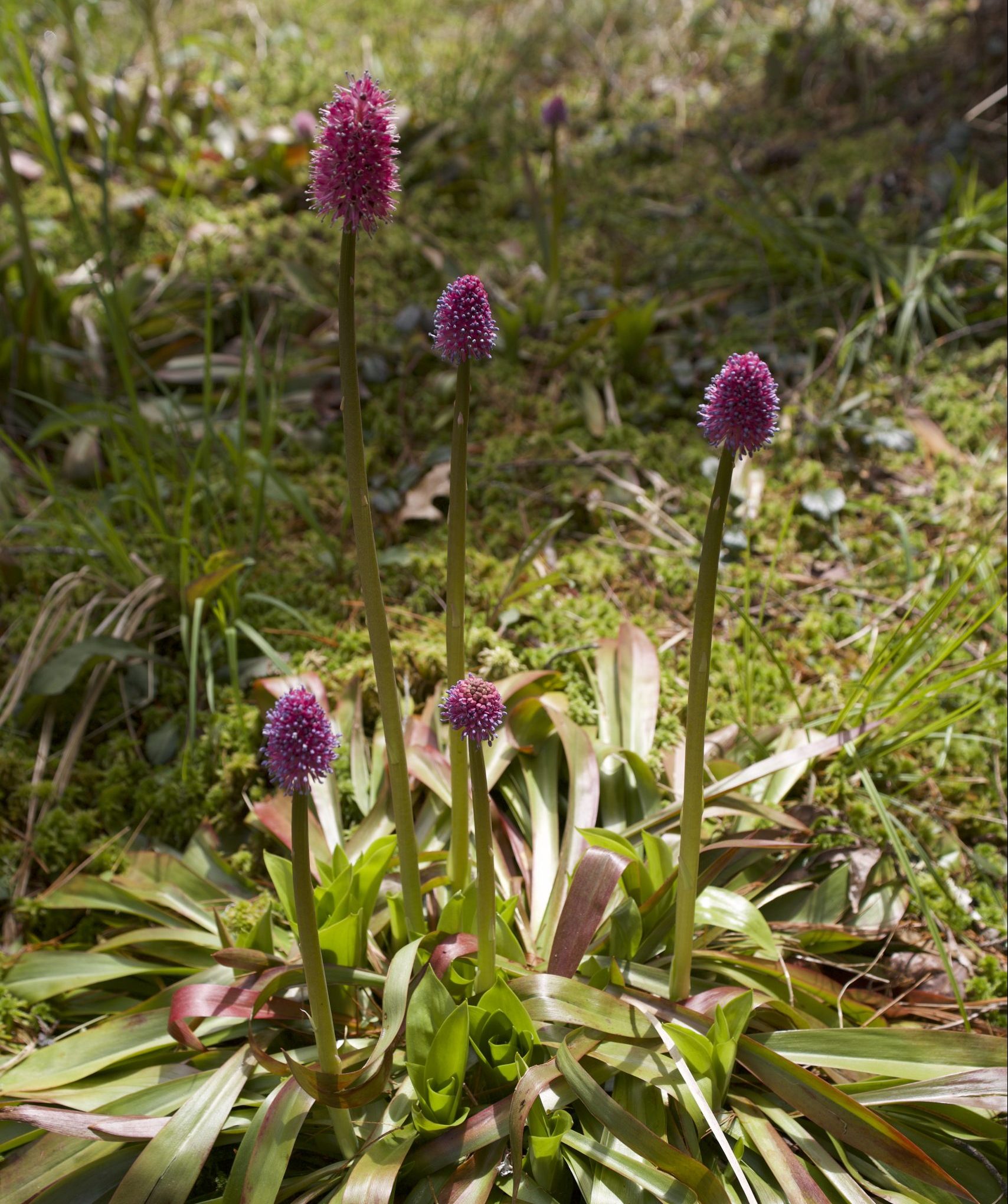
Georgia’s mountain bogs are early successional communities that support a variety of imperiled organisms. These include the federally endangered swamp pink (Helonias bullata), as well as the state-listed purple pitcher plant (Sarracenia purpurea var. montana). Relatively few high-quality sites remain in Georgia, but a high proportion of those are found on public land. An essential part of our conservation work has included propagation of rare plants from wild populations and reintroduction of this material into suitable habitat, as well as routine habitat maintenance and monitoring. ABG also leads the coordination of annual meetings to review accomplishments, set goals, coordinate work, and share data. Our current focus includes monitoring and remediation efforts following disturbance from feral hogs (Sus scropha) and exclusion to prevent additional damage; maternal line seed collection and banking; conducting and planning genetic research; and habitat management assessments and planning.
The first attempts at rare plant reintroduction in Georgia’s mountain bogs involved safeguarding swamp pink and mountain purple pitcher plants. These taxa are wild at only two locations, including a remote site on the Chattahoochee National Forest containing only the pitcher plant and a privately-owned bog that once supported both species but has lost ecological integrity following severe hydrologic alteration. Reintroduction into suitable habitat on protected lands has been conducted with the goal of creating experimental populations and spreading the risk of extirpation among multiple sites.
More than 500 individual mountain purple pitcher plants have been used to establish 7 experimental sites since 1997. Recruitment has been documented at 5 of those sites. The original wild population has been augmented with more than 200 additional individuals since 1995. Fruit set, the first known from Georgia in decades, was documented there in 1999. In 2000, the first seedlings were noted. A 2013 census indicated multiple generations of plants, flowering recruits, and over 400 total individuals. A 10-year site assessment and population inventory in the fall of 2023 will inform the first maternal line seed collection for this species in Georgia. This material will be banked and could be used for future augmentation and reintroduction work, guided by the results of a population genetics study currently underway at ABG for this species.
Similar safeguarding efforts have established new populations of swamp pink at 4 protected bogs. Since 1997 over 400 individuals have been returned to the wild—most in the experimental sites. The first flowering of this species in a created population (2010) and the resultant seedlings (2011) represented the first documented seedling recruitment of this species in Georgia. There are now multiple generations of this species in multiple sites on protected and appropriately managed land, which was the ultimate goal. More recent outplantings have been individually tagged. ABG began maternal line seed and leaf sample collections for swamp pink in 2020, and this material has also been added to ABG’s Conservation Seed Bank and DNA Biorepository, respectively.
Cooperative management has been the key to successful establishment and independent reproduction in both wild and experimental sites. Management activities have included manual and mechanical removal of woody vegetation in ecotones (transition zones) between the wetland and upland habitats, invasive exotic plant treatment, prescribed fire, and exclusion of invasive hogs. These activities have been critical in preventing damage to sensitive sites, reducing competition, and decreasing shading and evapotranspiration to maintain integrity, sunlight, and moisture. Vegetative growth, flowering, seed production, and seedling recruitment have increased for both swamp pink and purple mountain pitcher plant following management events. These collaborative efforts likewise support the state listed Southern bog turtle (Glyptemys muhlenbergii), which also relies on captive rearing to supplement and reinforce the limited number of fragmented populations remaining. These examples illustrate how reintroducing rare plants can have complementary benefits to other species and that reintroduction itself is not sufficient—ongoing site management is required to successfully reestablish and maintain thriving in situ populations.
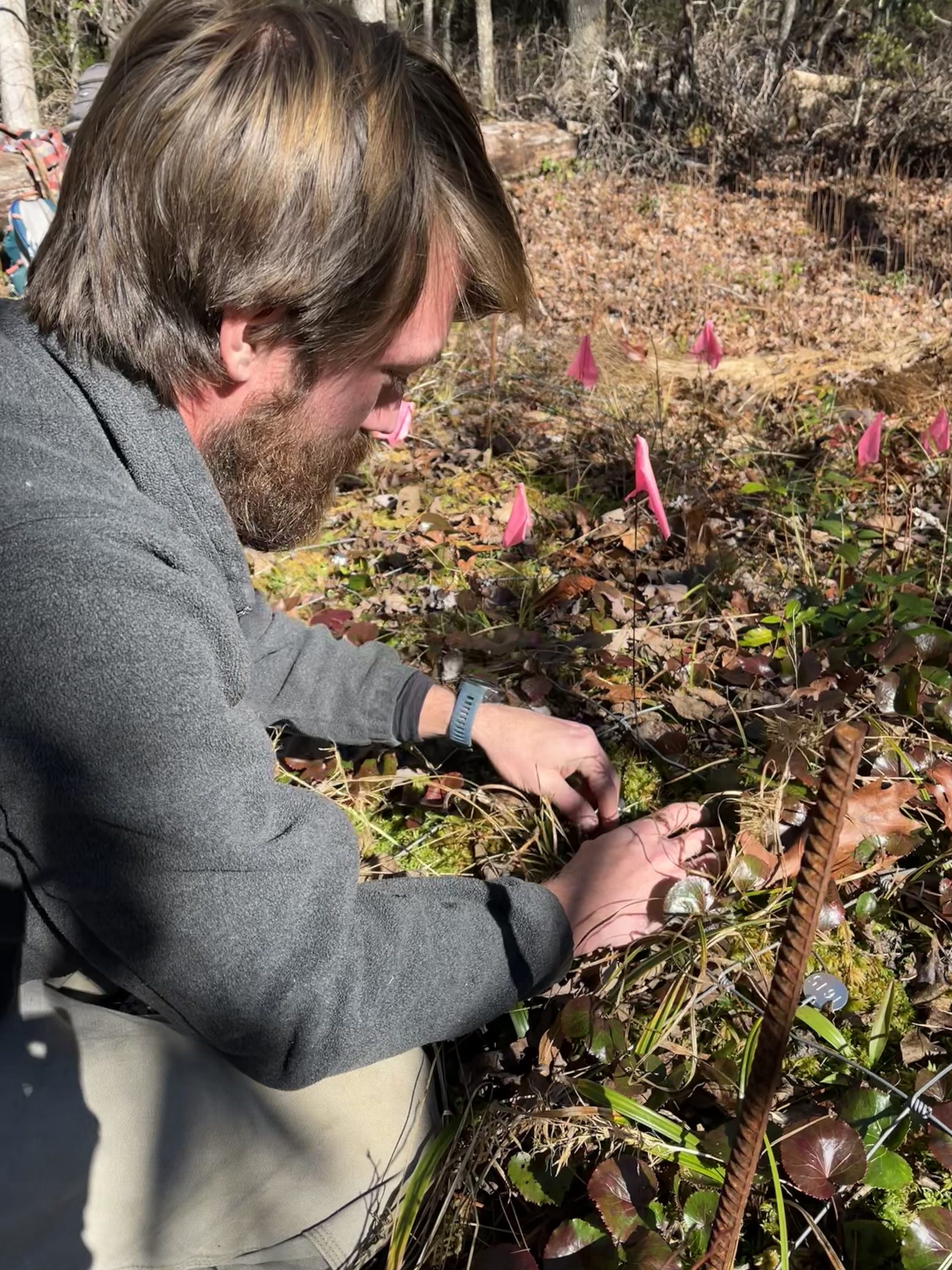
ABG maintains a database on behalf of GPCA that houses information on rare plant conservation activities. This provides a central repository to track ex situ collections, in situ augmentations/reintroductions, monitoring data and survivorship analysis, and collaborative management actions for priority species. This system was developed using the suite of mountain bog species and sites and has been essential in coordination and evaluation of key actions for collaborative projects. The success of these efforts are serving as models of success for the Bog Learning Network(BLN) and the Southeastern Plant Conservation Alliance (SE PCA). Applying and updating the Center for Plant Conservation’s Best Practices Guidelines helps to ensure the survival of these species and their habitats in the wild, while documenting successes and steps to improve outcomes helps to refine best practices and promotes their importance and use in other networks.
-
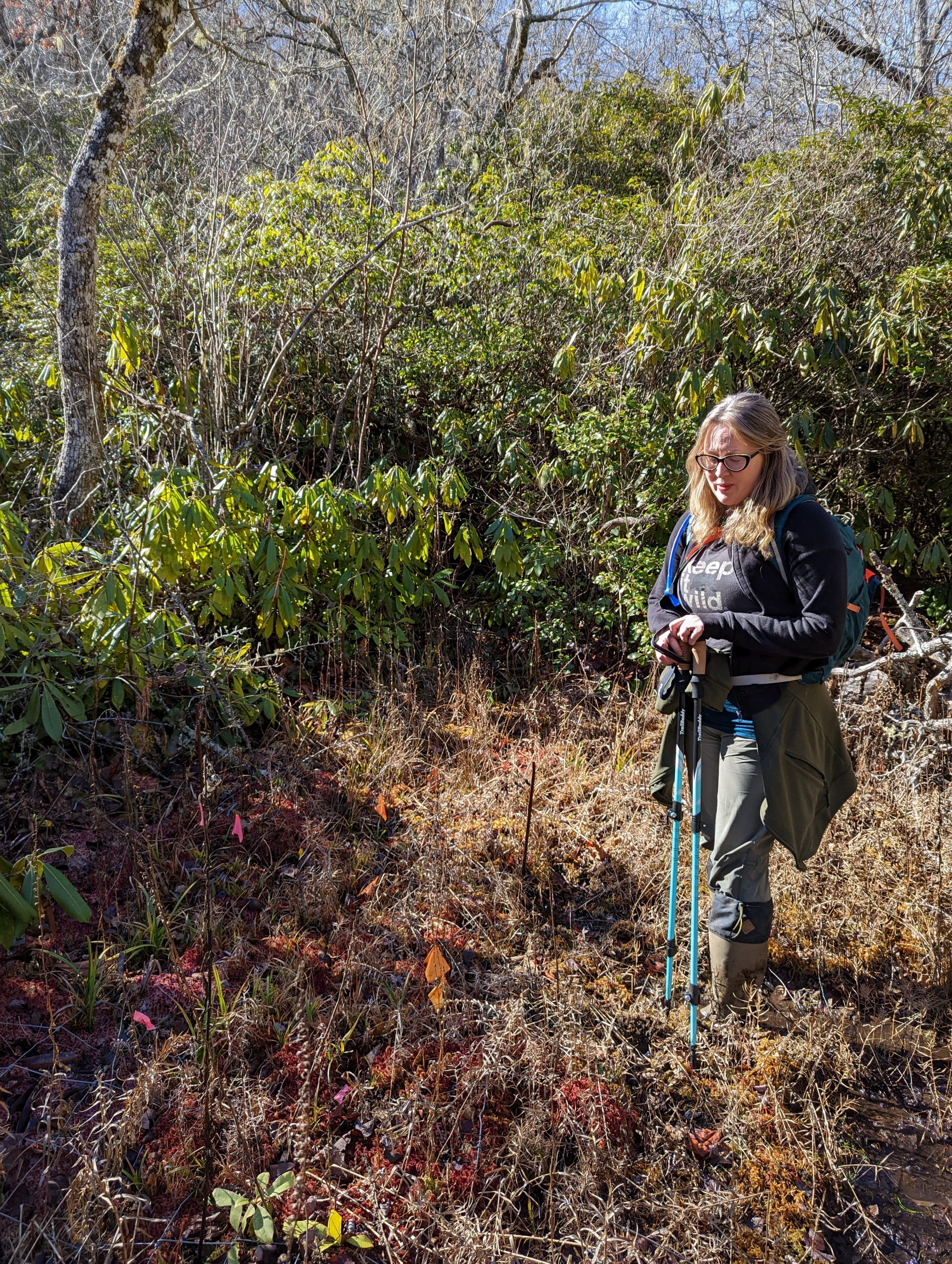
Carrie Radcliffe monitoring establishment of outplantings in areas caged to exclude feral hogs. Photo by Will Hembree. -
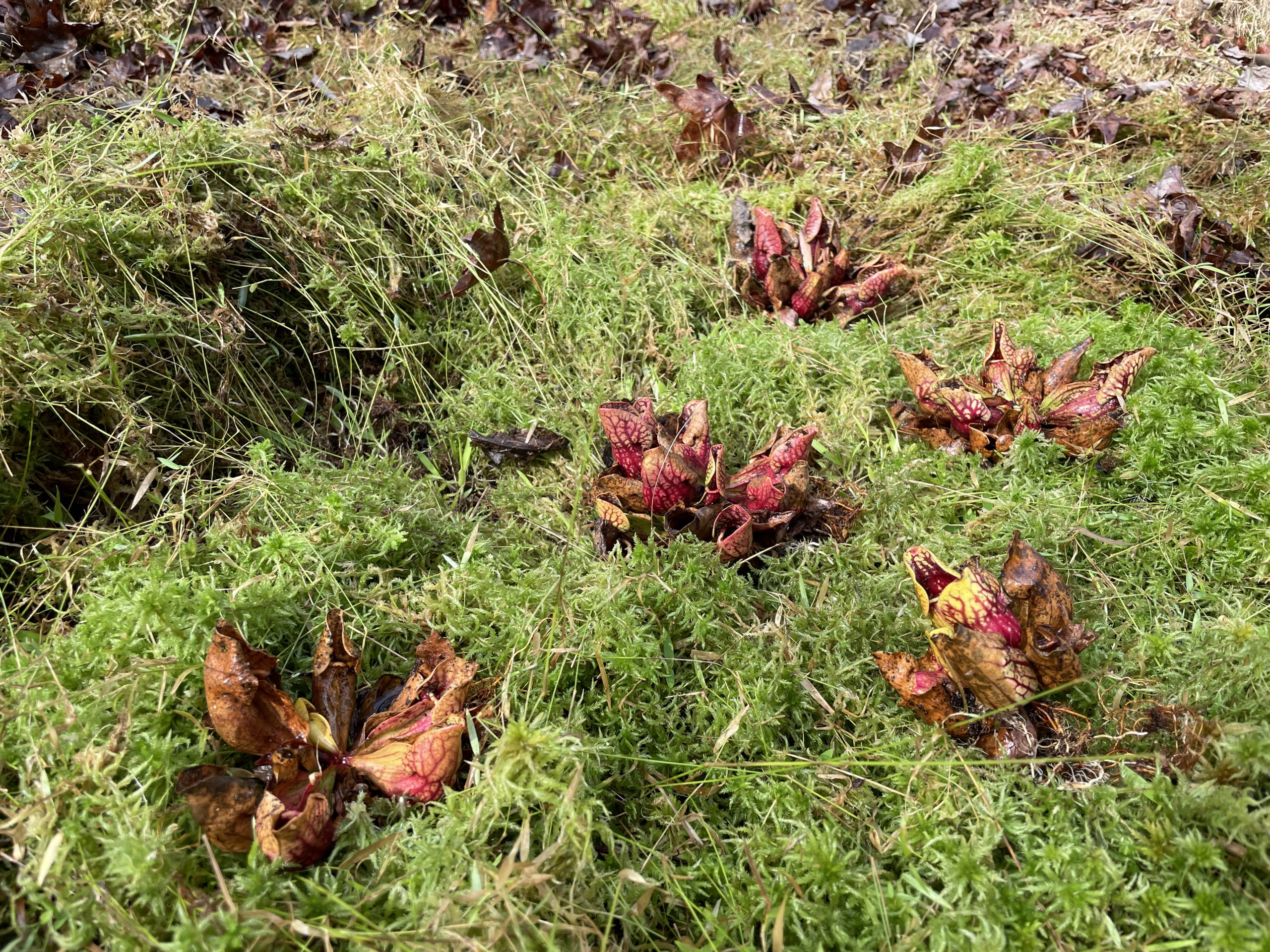
Outplanting mountain purple pitcher plants at a protected site with suitable habitat within the native range with Carrie Radcliffe. Photo by Madison Ohmen. -
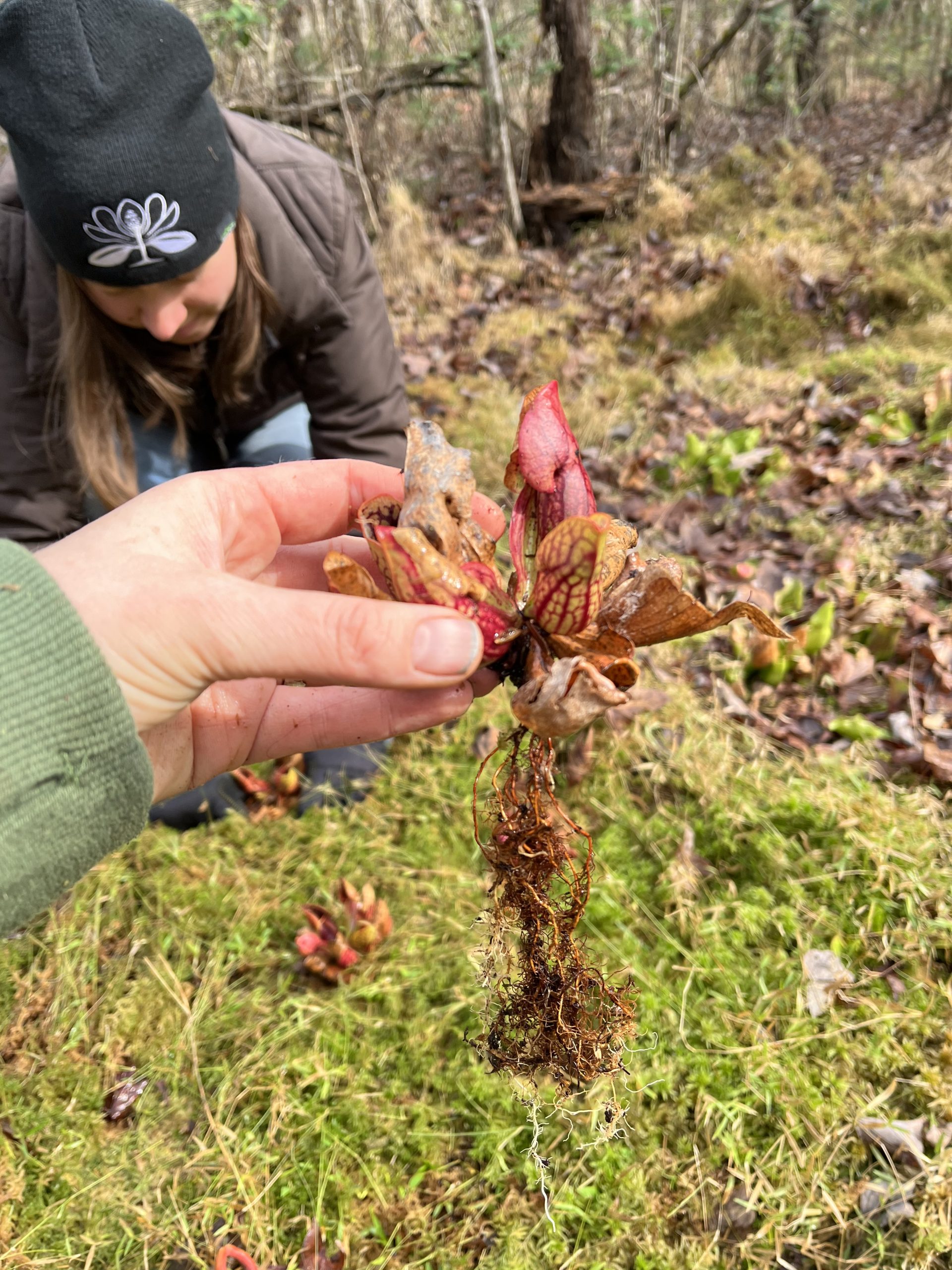
Montane purple pitcher plants being planted in an existing experimental wild site by Madison Ohmen and other Garden staff. Photo by Carrie Radcliffe.